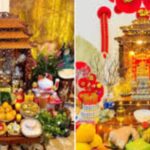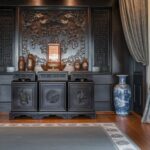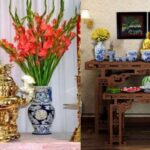## Signs of Abnormalities on the Ancestral Offering Bowl
**Bát hương xê dịch**
The ancestral offering bowl, a sacred vessel, should remain centered on the altar and untouched throughout the year, even during end-of-year cleaning. When tending to the altar, use a clean cloth and hands to wipe the offering bowl, taking care not to disturb its position.
Towards the year-end, trim the incense ash buildup in the bowl for a neater appearance, disposing of the excess ash properly by burning it. Retain an odd number of incense sticks in the bowl for familial peace and prosperity.
**Bát hương bị đặt chông chênh**
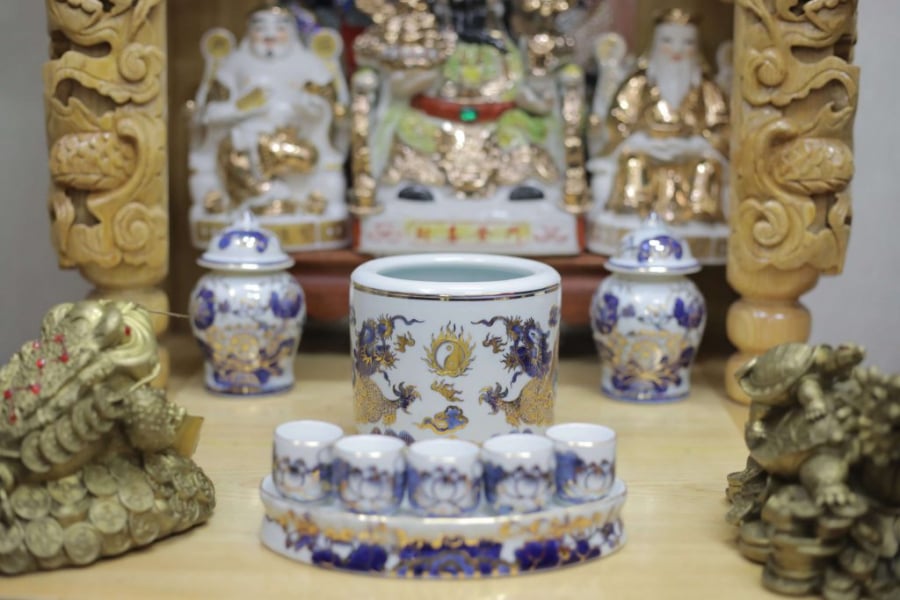
Unsteady Offering Bowl
The ancestral offering bowl holds a sacred place on the altar and should be positioned securely. Avoid placing it precariously, tilted to either side, as this is considered a major taboo.
**Bát hương làm bằng đá**
Using a stone offering bowl for home worship is another major taboo. Stone offering bowls are reserved for temples and shrines. Employing one in a home setting may lead to the dissipation of the family’s wealth and fortune.
**Trong bát hương có cát**
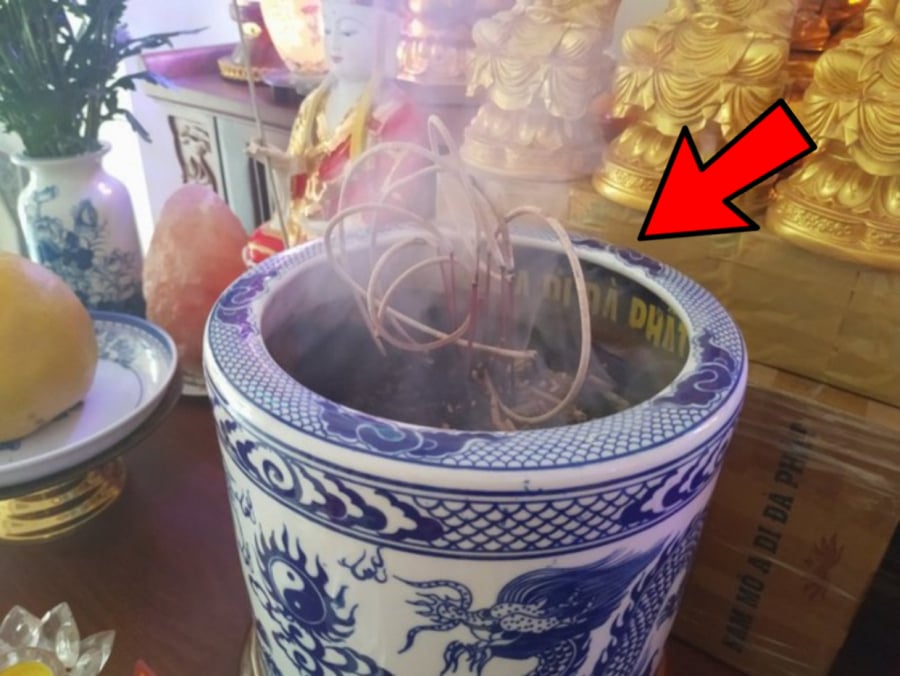
Sand in the Offering Bowl – A Major Taboo
Some families use sand in the offering bowl to hold incense sticks. However, according to feng shui principles, sand is considered impure and should not come into contact with sacred objects like the offering bowl. Including sand in the bowl may bring misfortune and adversity to the household.
Instead, use straw ash in the offering bowl to attract wealth and bring peace to the family.
**Lưu ý khi thắp hương trên bàn thờ**
Typically, there are at least two ancestral offering bowls on the family altar: one for worshipping deities and the other for venerating ancestors. Some families may opt to use a single bowl for both purposes, depending on the homeowner’s decision. Other families may have more, such as four bowls, dedicated to specific entities like the Ancestral Mother, Mr. Manh, the Land God, and ancestors.
According to popular belief, having three offering bowls is a common choice: the bowl for the Ancestral Mother and Mr. Manh is placed on the left, the bowl for the Land God and deities is in the middle, and the bowl for ancestors is on the right.
*Note: This information is for reference and personal reflection only.*
The Ancient Superstition: Unraveling the Fear of Windows by Our Forefathers.
The window is an essential feature of any home, but its placement was a careful consideration for our ancestors. Superstition dictated that an incorrectly placed window could bring about misfortune. This belief highlights the importance of understanding the impact of natural lighting and airflow, as well as the cultural and spiritual significance attached to this humble architectural feature.


























